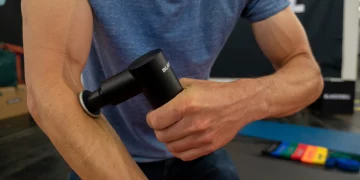Introduction: The Rise of Emotional Wellness in Subscription Boxes
In recent years, the subscription box market has exploded with offerings that cater to almost every lifestyle niche—beauty, fitness, food, books, and more. Among these, one of the fastest-growing trends is self-care subscription boxes designed specifically for emotional wellness. Self-soothing kits, thoughtfully curated packages that combine aromatherapy, fidget tools, breathwork cards, and other sensory aids, are gaining popularity as accessible tools for managing stress, anxiety, and emotional overwhelm. These kits promise not just momentary comfort but a daily practice of emotional regulation and mindfulness. This article explores the rise of self-soothing kits, their components, psychological benefits, cultural relevance, and why they may well become the next big craze in the subscription box industry.
Understanding Self-Soothing: A Core Emotional Regulation Skill
Self-soothing refers to the ability to calm oneself during times of distress or emotional turbulence. Rooted in developmental psychology, it is a skill typically developed in early childhood through nurturing caregivers but can be learned and strengthened throughout life. For adults, effective self-soothing strategies are critical to managing anxiety, trauma responses, and everyday stress.
Incorporating physical, sensory, and mindful techniques, self-soothing practices help shift the nervous system from fight-or-flight to safety and regulation. These include activities like deep breathing, tactile stimulation, calming scents, and grounding exercises. Self-soothing kits aim to package these techniques into tangible, easy-to-use tools that empower users to cultivate emotional resilience independently.
The Anatomy of a Self-Soothing Kit
Most self-soothing kits combine several carefully selected items designed to engage multiple senses for holistic regulation:
- Aromatherapy: Essential oils or scented candles known for calming properties, such as lavender, chamomile, or eucalyptus, stimulate the olfactory system to reduce stress hormones and induce relaxation.
- Fidget Tools: Items like stress balls, textured rings, or putty engage tactile senses, providing a physical outlet for nervous energy and improving focus.
- Breathwork Cards: Instructional cards guide users through conscious breathing exercises, such as box breathing or diaphragmatic breathing, that activate the parasympathetic nervous system and decrease anxiety.
- Mindfulness Prompts or Journals: Reflective prompts encourage emotional awareness and self-compassion, fostering mindful presence.
- Soothing Teas or Supplements: Herbal teas or natural supplements like chamomile or magnesium support relaxation internally.
- Visual or Auditory Aids: Items such as calming visual cards, mini sound machines, or playlists for meditation add layers of sensory comfort.
Why Are Self-Soothing Kits Popular Now?
Several cultural and psychological factors drive the surge in self-soothing kits:
- Rising Mental Health Awareness: Increased conversations about anxiety, burnout, and emotional well-being have created demand for accessible self-care tools.
- The Pandemic Effect: COVID-19 lockdowns intensified feelings of isolation and stress, encouraging people to seek at-home wellness solutions.
- Digital Fatigue: Constant screen exposure and digital overstimulation prompt a need for tactile, offline grounding techniques.
- Personalized Wellness: Consumers now expect personalized, curated experiences rather than generic products, making subscription kits with niche focus highly appealing.
- The Shift Toward Preventative Care: Instead of waiting for crisis points, many are embracing daily emotional maintenance to build resilience.
The Psychological Science Behind Self-Soothing Tools
Aromatherapy influences brain regions like the limbic system, which governs emotions and memories. Studies show lavender essential oil can reduce cortisol levels and improve mood. Tactile stimulation from fidget tools provides sensory input that helps regulate the nervous system, promoting calm focus.
Breathwork activates the vagus nerve, enhancing parasympathetic activity that counteracts stress responses. Research links regular mindful breathing to reduced anxiety, lower heart rate, and improved emotional regulation.
Mindfulness prompts facilitate cognitive reframing and emotional acceptance, proven techniques in cognitive behavioral therapy (CBT).
Together, these elements create multisensory interventions that engage body and mind synergistically for effective self-soothing.
The Business of Self-Soothing Kits: Subscription Model Benefits
Subscription boxes capitalize on convenience and surprise, delivering curated experiences directly to consumers’ doors. For self-soothing kits, this model supports:
- Consistency: Regular monthly deliveries encourage ongoing self-care routines.
- Discovery: Subscribers can explore new products, techniques, and scents they might not find on their own.
- Community: Many services foster online forums or social media groups, connecting users around shared wellness goals.
- Customization: Advanced services offer tailored kits based on mood tracking or user preferences, increasing perceived value.
Brands also leverage influencer marketing and wellness trends to reach target audiences, particularly younger consumers eager for authentic self-care tools.

Examples of Popular Self-Soothing Kits and What Sets Them Apart
- Calm Crate: Known for seasonal aromatherapy blends paired with tactile tools and guided meditations, emphasizing sensory harmony.
- The Self-Care Box: Combines luxury bath products with mindfulness journals and calming teas, offering a spa-like experience at home.
- Breathe Easy Kit: Focuses heavily on breathwork education with extensive instructional materials and complementary scents designed to open airways and ease anxiety.
Each brand differentiates through curation style, educational content, and community engagement, demonstrating the market’s diverse approaches to self-soothing.
How Self-Soothing Kits Fit into Broader Wellness Trends
These kits align with larger movements in holistic health: integrative care, mind-body medicine, and trauma-informed wellness. They recognize that emotional health depends on a complex interplay of physiological and psychological factors, emphasizing practical tools that empower self-regulation.
As wellness shifts away from reactive medical models toward proactive lifestyle management, self-soothing kits represent a tangible expression of this paradigm. They democratize access to therapeutic techniques and promote autonomy over emotional states.
Challenges and Considerations for Consumers
While appealing, self-soothing kits are not a panacea. Users must approach them as supplements—not replacements—for professional mental health care when needed. Some kits may oversimplify complex emotional struggles or rely heavily on aesthetics over efficacy.
Price can be a barrier, with some kits costing upwards of $40-$60 per month, which may exclude low-income individuals. Additionally, sensitivity to scents or tactile stimuli varies widely, requiring options for personalization.
Consumers should research ingredients, brands’ mental health credentials, and look for evidence-based tools to ensure safe, effective use.
The Future of Self-Soothing Kits: Innovation and Integration
Looking ahead, technology and personalization will shape the evolution of self-soothing kits:
- AI-driven Customization: Using mood data from apps or wearables to tailor kits precisely to emotional needs.
- Hybrid Digital-Physical Experiences: Integrating apps or AR guides to enhance breathwork, meditation, or journaling practices.
- Sustainability: Eco-friendly packaging and ethically sourced ingredients will become standard expectations.
- Inclusivity: Designing kits for neurodiverse populations or specific mental health challenges to broaden accessibility.
- Collaborations: Partnerships with therapists, neuroscientists, or wellness experts to improve therapeutic validity.
Practical Tips for Building Your Own Self-Soothing Kit
For those not ready to subscribe, curating a personal kit can be equally effective:
- Choose essential oils or candles that soothe you—test scents first.
- Include a tactile object you find comforting, like a smooth stone or stress ball.
- Print or create simple breathwork cards with step-by-step instructions.
- Add a journal or gratitude notebook for reflection.
- Stock herbal teas or supplements that support calmness.
- Create a calming playlist or white noise machine for auditory comfort.
Personalizing the kit ensures emotional connection and consistent use.
Conclusion: The Emotional Promise of Self-Soothing Kits
Self-soothing kits epitomize the contemporary desire for accessible, practical emotional wellness tools that fit modern lifestyles. By blending sensory science, mindfulness, and convenience, these curated packages help people reclaim calm in a chaotic world.
Their subscription-based model encourages ongoing self-care habits, making emotional regulation a daily priority rather than an afterthought. While not a replacement for therapy, self-soothing kits offer an inviting entry point to emotional resilience and holistic wellness.
As mental health awareness grows and the demand for personalized care intensifies, self-soothing kits are poised to become a beloved staple in the wellness marketplace—perhaps the next big subscription box craze.











































